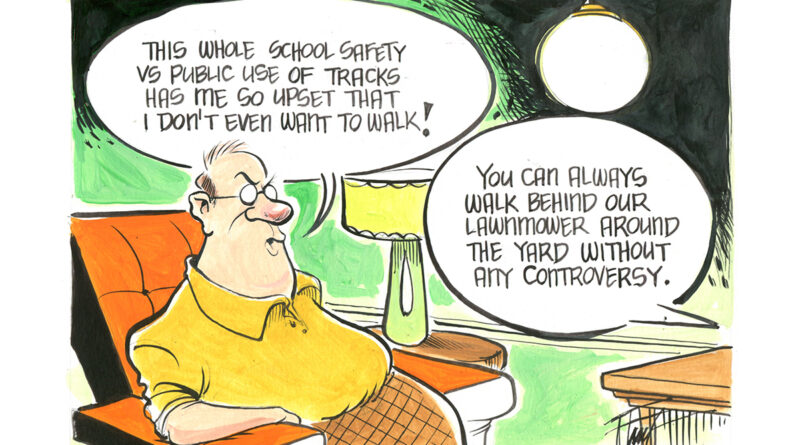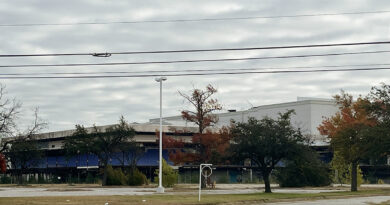Patsy Shropshire: Schools Shouldn’t Kick Taxpayers Off Tracks
By: Patsy Shropshire
Now that beautiful (and costly) renovations have been made to Dallas ISD tracks and fields, the surrounding residents are locked out, locked out by the very fences they helped pay for.

Surrounding residents who for decades used these tracks during non-school hours for convenient movement medicine are now using the streets.
Using the streets means many things: pounding the cement instead of the more-forgiving track; navigating potholes, cracked sidewalks, and trash to avoid falls; dodging distracted drivers and narrowly escaping speeding drivers; abruptly reversing direction because a pack of bobcats lies ahead; mentally taking note of drivers in idling cars at Crestline Park (because why is someone loitering in their car in the dark at 6 a.m.?).
My community wellness program has used W.T. White High School’s track two to three mornings a week for almost 15 years for preventative medicine. The program includes ladies in their 50s, 60s, and 70s working at aging in a healthy manner.
We could use the track even before the sun rose because the lighting was on a pre-set timer. Now that we’re locked out, we’ve encountered all the above street examples and two falls.
Moreover, with the backing of a previous W.T. White administration, our community wellness program raised over $60,000 to install a small exercise area adjacent to the track. Countless community donors, a few generous major donors, and a Preston Center Rotary Club grant made this exercise area possible.
The project also won a competitive $10,000 grant from the American Academy of Dermatology that would provide low-profile artificial shade over the exercise area. What do I do with this grant now that we’re locked out?
It’s sad that I recently turned down a new grant from the Preston Center Rotary Club, explaining that Dallas ISD will not share the track area.
Safety is not the issue. Solid fencing separates the running track from the school. Similar fencing should separate any public school track from its school.
As one resident told me, “The track is the MOST secured place in the school.”
Public high school tracks should have open hours for community use, which should be the same as before these renovations. Dallas ISD could be the leader in recognizing dual ownership of public high school tracks. The school district AND the community share ownership. Considering the property taxes we pay and the bonds we’ve approved, dual ownership makes sense.
Physical inactivity is one of the critical components of all the comorbidities which made COVID as deadly as it was. What a step back in community health if these tracks are closed to the public, especially in lower-economic neighborhoods, where streets and conditions are likely more challenging than what we have in North Dallas.
Physical therapist and wellness specialist Patsy Shropshire, of Dallas, earned her doctorate in physical therapy from Hardin Simmons University.









Plano West just locked their track last week. And Carrollton closed Creekview track a year ago to eliminate track access for their entire school district, after spending $14M to upgrade facilities, for the first time in decades. This unwelcoming epidemic sweeping across our state puts forth yet another example of obtuse government bureaucrats working against the well-being of citizens.
This brain dead trend of closing tracks and practice fields flies directly in contradiction to the recommendation of ‘building and maintaining playgrounds, parks, and other green spaces, which support physical activity and social connection’ found in the 20th annual ‘State of Obesity’ report from Trust for America’s Health (TFAH) on obesity in the United States.
That report additionally noted that : “One study found that children who live in communities with unfavorable built environment conditions—for example, poor housing and no access to sidewalks
or parks—were up to 60 percent more likely to have obesity or be overweight.”
State Education Committee legislators seem to be truly negligent in failing to address this important issue.